He’s one of the most-successful smugglers in US history. In the late 1970s and early 1980s, Louisiana native Barry Seal made a fortune trafficking unbelievable quantities of cocaine onto American soil. A born pilot, Seal was able for years to outwit the DEA, the FBI, US Customs, and any other Federal agency that tried to stop him. Loosely connected to Pablo Escobar’s notorious Medellin Cartel, Seal lived a life of adventure, riches, and excitement in far-off lands.
Until, suddenly, he didn’t.
In 1983, Seal was caught boasting in a wiretap and indicted for smuggling. Facing a minimum of ten years, he realized his only escape was to flip. To go from being America’s top drug runner to its top DEA informant. It was a decision that would lead him from the battlefields of Nicaragua to the rainforests outside Medellin… and bring him face-to-face with Pablo Escobar. A twisted, funhouse mirror ride through the darker side of the 1980s, this is the story of Barry Seal, Louisiana’s cocaine cowboy.
Adrenaline Junky
It was a sultry day in Baton Rouge when Adler Berriman Seal – known all his life as Barry Seal – was born on July 16, 1939.
And that is one of the last uncontested facts you’re going to hear during this entire story. Thanks to his penchant for aliases, possible connections with the CIA, and love of spinning tall tales, it’s surprisingly hard to get a definitive account of Barry Seal’s life.
We found sources that contend he was nothing but a glorified conman; others that insist he was a long-term CIA asset; and yet others that implicate him in everything from the Bay of Pigs to the JFK assassination.
In other words, we’ve had to do a lot of picking and choosing with this one, trying to tease a narrative out a mess of sources.
While we’ve hopefully got something approaching the truth, please do keep one, crucial fact in mind: No-one on Earth could talk as much crap as Barry Seal. And Barry Seal sure liked to hear himself talk.
From his earliest days, the young boy was obsessed with the planes that buzzed through the skies above Baton Rouge. By his teenage years, Seal was spending all his free time hanging around the airport, talking to any pilot who’d pay him some mind.
It helped that – even at this young age – he was naturally charismatic, with a storyteller’s instinct and an affable charm.
But charisma wasn’t Barry Seal’s only talent.
Aged just fifteen, Seal started pilot lessons. He turned out to be such a natural that his instructor was letting him fly solo after only 8 hours training.
Because, y’know, it’s not like letting an undertrained teenager take command of a flying bomb could go wrong somehow.
And go wrong it really could have.
Despite his talent, Seal was a crazy risk-taker, pushing his aircraft to its very limits. His instructor even noted he seemed incapable of grasping his actions had consequences. But apparently borderline sociopathy isn’t a disqualification for flying in Louisiana, because Seal was a qualified pilot by the time he was 16.
When he graduated high school in 1957, his yearbook noted he was “full of fun, full of folly.”
How right his classmates would turn out to be.
After dropping out of college, Seal set up a business flying advertising banners over Baton Rouge. On August 10, 1958, while trying to show-off Seal misjudged a maneuver and sent his plane slamming into the ground.
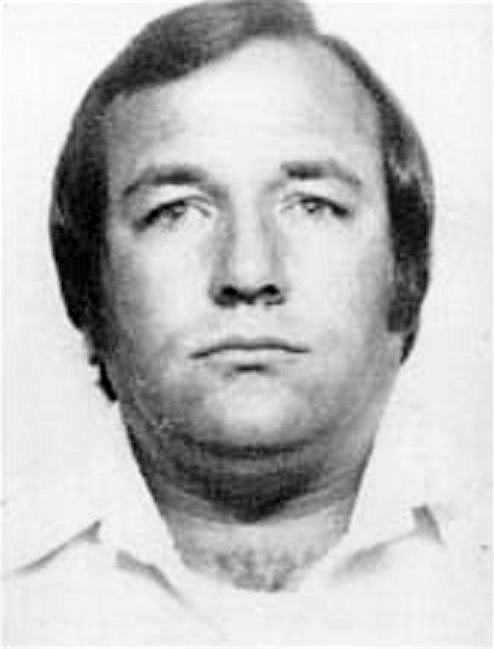
The young pilot lost several teeth and spent a week in hospital.
For any other teenager, this could’ve been the wakeup call. The moment when they realized they weren’t invincible, that bad things could happen.
But not Barry Seal.
In 1961, Seal joined the Louisiana National Guard, signing up for additional pilot training. There, he got so good at pushing an aircraft past its limits; so good at executing death-defying stunts, that he could soon fly in almost any conditions.
It was a skill he’d put to good use in Vietnam.
Or would he?
Depending on who you ask, Seal either spent the mid-sixties flying Special Forces missions in Vietnam; or he spent the time as an Army Reserve in the US, quietly improving his pilot skills and lying about his military service.
Both tales seem plausible. Seal would turn out to be such an expert at flying through jungle that it’s tempting to think he must’ve had prior experience.
On the other hand, his military record shows no signs of duty in Asia, let alone in a combat zone. Whatever the truth, it’s generally agreed that, by 1967, Seal had been honorably discharged and gotten himself a job flying with commercial airline TWA.
There, he became one of the youngest command pilots the fleet had ever seen.
But his initial excitement soon wore off.
Flying commercial, you were forbidden from doing the stunts Seal loved so much. For such an adrenaline junky, being a professional pilot was like you or I professionally watching paint dry.
No, Seal needed excitement in his life. Some outlet to stave off the boredom.
Luckily, adventure was right around the corner.
Adventure Time
By 1972, Barry Seal was a twice-divorced pilot with a string of failing business in Baton Rouge, and a deep desire to do something interesting.
It’s at this point he met Murray Morris Kessler.
Kessler had some connections in Mexico with a bunch of anti-Castro Cubans. These guys needed a capable pilot to fly 1,350 lbs of plastic explosives down from the US.
And they were willing to pay big. Here it was. The excitement Seal had been craving. The danger. What else was this overweight, under-stimulated schlub from Louisiana gonna do with such an offer?
Seal said yes.
And that’s how, on July 1, 1972, Barry Seal came to be sat in a hotel room with seven other accomplices when US Customs Agents broke down the door and arrested the lot of them.
Kessler’s Cubans? They’d just been a front for a Federal sting operation. And now the government was gonna throw the goddamn book at Barry Seal.
In the summer of 1974, the case went to trial.
By now, Seal had been fired from his job at TWA, who’d heard all about his aborted Mexican adventure. He’d lost most of his savings on legal fees. And, on top of that, it now looked like he was going to prison. The only reason he didn’t was thanks to a miracle.
Years later, Seal would boast his CIA buddies stepped in and quashed the trial on grounds of national security.
But the reality is that Seal almost certainly had no connections with the Agency at this point. And it’s not like the trial never happened. The case played out in public court for five days.
No. What really saved Seal wasn’t friends in high places…
…but good old fashioned government incompetence. During the trial, the prosecution brandished an assault rifle before the jury, claiming it belonged to Seal.
The defense pointed out that this was prejudicing the jury, the judge declared a mistrial, and Seal walked free. It was the single luckiest break Barry Seal would get in his entire life. Had the government’s prosecution team not been so dumb, there’d be no story for this video at all.
That same year, Seal married Deborah Ann Dubois, with whom he’d eventually have three children.
But while it was great to be not just a married man, but a free married man, Seal was still in a bad place. TWA wouldn’t take him back. Thanks to the smuggling trial, he’d been blacklisted with the other airlines, too.
He was a broke, unemployable, fantastically-talented pilot with nothing to do.
But that last bit would soon change.
As 1975 dawned, demand for talented, unscrupulous American pilots south of the border was about to explode.
It was the beginning of the era of cocaine. And it would transform Barry Seal’s life.
Meanwhile, in Colombia…
In June of 1971, Richard Nixon stood before Congress to declare drug use was America’s “public enemy number one”.
It was the beginning of the War on Drugs. Just two years later, in 1973, the DEA was created. But if Nixon thought the drug scene was bad in 1971 – with all those damn hippies smoking pot – things were about to get a whole lot worse.
Cocaine had been around for a while, but it had always been too expensive; too out of step with the 1960s. But as production methods improved, the price began to drop, even as the purity went up. By the time Barry Seal was in court, cocaine was no longer something only Hollywood royalty could afford.
And, as the USA turned away from pot and LSD, demand for cocaine was beginning to creep up.
However, it would take a very specific set of circumstances to turn coke into the lynchpin of Barry Seal’s life. A specific set of circumstances in one specific country: Colombia. From the outside, Colombia in the early 1970s looked relatively stable, with a growing economy and little violence.
But this outward appearance masked a deeply fractured society.
All power was concentrated in the hands of a tiny elite. Since 1957, the country’s two major parties – the Liberals and Conservatives – had been in a power-sharing agreement that locked everyone else out of politics.
The reason for this had been something called La Violencia, a decade-long, undeclared civil war between the two parties that had killed 200,000 people.
But while the 1957 agreement had ended the war, the fighting had still left the nation deeply traumatized.
La Violencia had been marked by extreme brutality. People were publicly decapitated and their heads used as soccer balls – to give just one chilling example.
Pablo Escobar had grown up among this, spending his first decade in a world of gruesome lynchings and state-sanctioned murder.
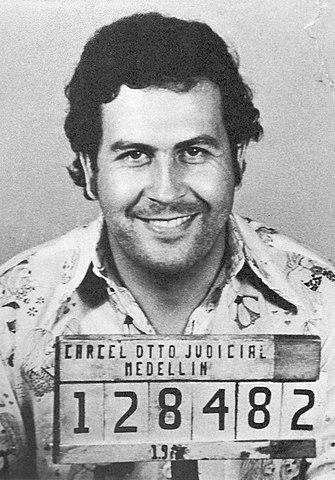
He’d also lived with the aftermath, when the economy bottomed out in the early-60s and many of the poorest turned to crime to survive. Yet even this potent mix of traumatized, desperately poor people locked out of political power might not have exploded had it not been for sheer bad luck.
Just as cocaine was starting to bring in serious money, the traditional Mexican gangs that supplied the States had been driven underground by a government crackdown.
Down in Colombia – where blow was actually produced – criminals saw a chance to fill the void.
The first warning sign of things to come came in November 1975, when Colombian police seized 600kg of cocaine.
In retaliation, drug gangs gruesomely murdered 40 people; an event known as the Medellin Massacre.
But the real turning point came in 1977.
That year, the wealthy Ochoa brothers approached Pablo Escobar – now a local drug kingpin – about uniting all the gangs in Medellin under a single umbrella group. One that would control every stage of cocaine, from production to trafficking to distribution.
It was the beginning of the Medellin Cartel; soon to become so powerful and so dangerous it made the Sinaloa Cartel look like a bunch of prancing Girl Scouts.
But the Medellin Cartel would soon become something else, too: Barry Seal’s employer.
Cocaine Days
How Barry Seal came to be employed by Escobar is a “right place, right time” sort of deal.
In 1976, the disgraced pilot had started a smuggling operation, flying down to Honduras and returning with marijuana. It was small-time enough that no-one bothered Seal, allowing him to get plenty of practice at using the lakes and bayous of the jagged Louisiana coastline for drug drops.
But it wasn’t small enough to keep him completely under the radar.
In late 1979, Seal touched down in Honduras to find his plane surrounded by cops. It was only thanks to dumb luck that he wasn’t flying any pot that day, although police did find an illegal rifle.
Thanks to that rifle, Barry Seal spent the next seven months in a Honduran jail.
Incredibly, this would turn out be a lucky break. On the flight home in July of 1980, Seal found himself sat next to Roger Reaves.
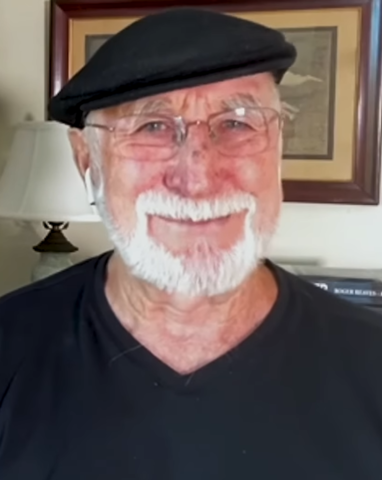
A professional drug smuggler with connections inside the Medellin Cartel, Reaves was at the forefront of this new era of cocaine.
He told Seal how the Cartel was investing in an island and light aircraft; how small planes would soon become the lifeblood of smuggling.
If Seal just happened to know any talented pilots of such aircraft… well, that pilot might be able to make themselves a lot of money.
It was an offer Seal couldn’t refuse. Before long, Barry Seal was smuggling cocaine for the Medellin Cartel.
It was everything Reaves had promised.
Seal’s income exploded overnight. By 1983, he would have made over $25 million. The thing is, he was worth it. Even in the early 1980s, you couldn’t just fly into US airspace from South America and not expect to receive the deepest cavity search in Customs history.
To slip in undetected, you had to fly so low over the Gulf of Mexico that you were almost touching the water.
But even then, you might still get picked up by radar. So you also had to fly slow, and make sure you came in near where the offshore oil fields were, so any bored air traffic controller who glimpsed you on his screen would assume you were a helicopter returning from a rig.
Finally, you had to drop your shipment without getting caught. By now, Barry Seal knew the swampy, tangled coastline of Louisiana better than anyone.
He would fly in at night with his lights off, using night vision goggles to find his way.
Using a walkie talkie and a GPS tracker, he’d radio his men exactly where to find the product. Then he’d drop it into the dark bayou below, and fly away into the night sky.
Shortly after, a boat would haul the cocaine out the swamp; from where it would be loaded into cars and driven to Miami.
It was a complicated set-up, but Seal pulled it off. None of his men were ever caught in the act.
For the DEA, still used to a world where “smuggling” meant “shoving blow up some mule’s ass and hoping for the best”, Seal’s advanced tactics left them dizzy. This was smuggling as an art form, designed to impress Seal’s employers in Medellin.
Not that Seal had ever met the guys paying his salary.
All of Seal’s contacts with the cartel had been through intermediaries. Pablo Escobar had never seen a picture of him. Never heard his real name, only his alias “El Gordo” or “the Fat Man”.
It would be this crucial, missing piece of information that would both spare Barry Seal a lifetime in prison…
…and sign his death sentence.
In the Spider’s Web
Although Seal was a clever smuggler, he wasn’t as clever as he thought he was.
For one thing, while Seal knew to only use pay phones to contact people, he was far too lazy to keep randomly choosing new pay phones. So, when the DEA decided to start collecting info on him, they simply wiretapped the ten pay phones he used the most and built their case that way.
For another, Barry Seal also liked to boast. To anyone and everyone.
It was this last trait that would destroy his life.
In 1981, a DEA agent wearing a wire walked into a Baton Rouge bar, went up to Barry Seal, and was all like:
“Hey! You look like the sort of fun guy who has really awesome stories about smuggling drugs for Pablo Escobar. Wanna tell me about them? If you could lean towards me and speak clearly as you do so, that’d be sweet.”
Incredibly, it worked. Seal started spouting off his mouth, and ended the conversation promising the undercover agent he’d smuggle some drugs from him.
It was the beginning of the end. Although the DEA and FBI would need over another year to build an airtight case, that one conversation was the start of Barry Seal’s downfall. The boot finally dropped in March of 1983. That month, Seal was indicted for cocaine smuggling. The following year, March 1984, his trial began, a ten year sentence hovering over his head.
That’s a long decade of boredom. Of being stuck behind bars, away from flying, away from the life Seal loved so much.
Panicked, Seal promised to turn informant, to give the DEA whatever they wanted.
“Oh?” We like to think the agents chuckled, “and what can you give us?”
Seal’s answer? Pablo Escobar.
It was a desperate gamble.
Although Seal worked for the Medellin Cartel, he’d never met Escobar. Had no idea how he’d ever go about setting the drug lord up.
The DEA were likewise unconvinced. They shoved Seal a phone and basically said “go on then. Prove it.”
So Seal called a connection in the Cartel. Pretended to be a pilot called Ellis MacKenzie who was super into the idea of flying enormous quantities of coke to the USA. Somehow, the desperate bluff worked. The connection agreed to set up a meeting between Seal and Escobar himself.
Suddenly, the DEA were no longer just looking at nabbing an American smuggler, but at dismantling the entire Medellin cartel.
Faced with such a prize, they agreed a plea deal.
On April 8, 1984, Seal walked a semi-free man onto an American airfield, and took off for Colombia.
That evening, he found himself at the Ochoa brothers’ estate, face to face with the entire cartel leadership.
It was the first time a DEA informant had ever met Escobar face-to-face. Luckily, Escobar had no idea “Ellis MacKenzie” was the same person as their old pilot “El Gordo” who’d been nabbed by the Americans.
The drug lord outlined his plans to “Ellis”.
He would fly 15,000kg of cocaine to America in preparation for selling at the 1984 Olympics.
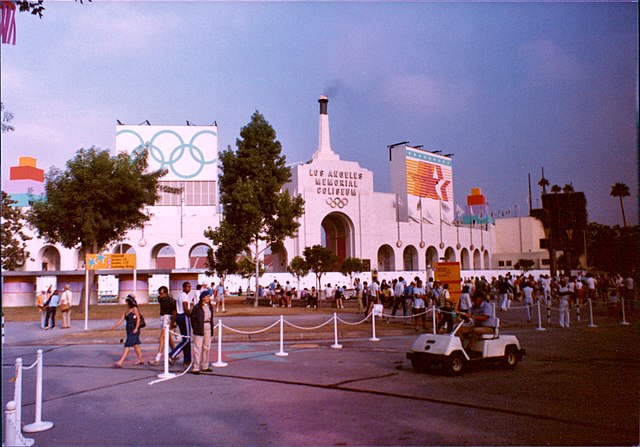
To load up, he wouldn’t come to Colombia, but to a military base in Nicaragua – which the Sandinista regime was renting out to Escobar. This all sounded fine to Seal, who must’ve been desperate to just get the meeting concluded and get out of there.
But if it all sounded fine to him, it was gonna sound way more than just fine to the CIA.
When word got to the Agency about Barry Seal’s adventure, things were gonna get crazier than ever.
The Fall Guy
Things started to unravel when Seal first flew into Nicaragua.
Although the Medellin Cartel had supposedly cleared it with the Sandinista government, someone had forgotten to tell the troops on the ground. Seal was shot down over the jungle, arrested, and thrown into a Nicaraguan jail.
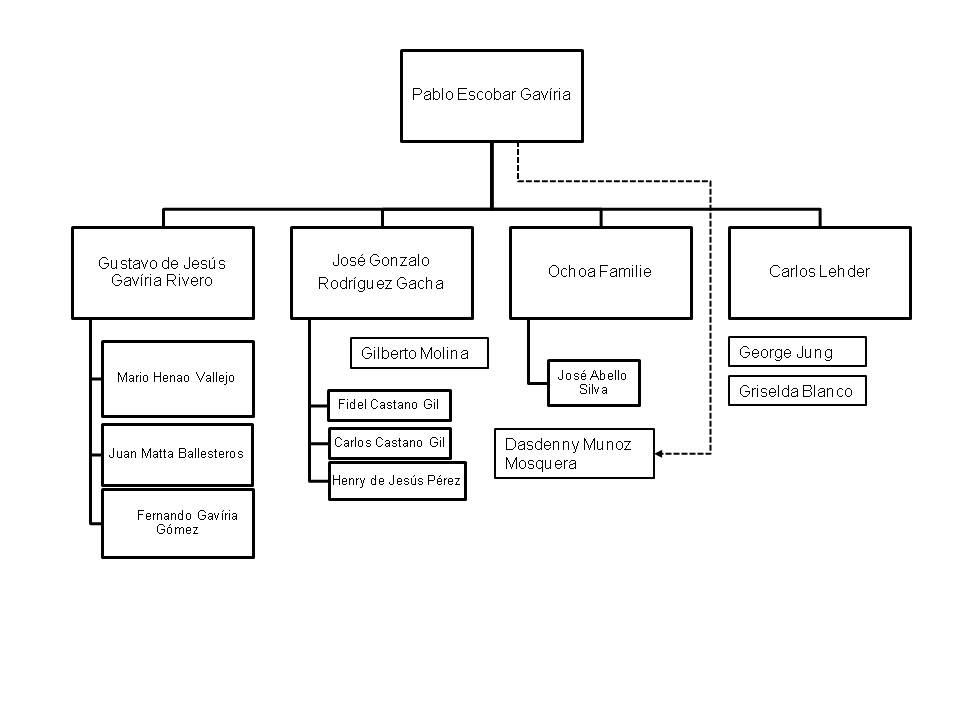
While Escobar’s contacts within the government would get him released, it unfortunately wouldn’t be before the DEA found out.
Unfortunate, because the DEA wouldn’t be able to spring Seal by themselves. Instead, they contacted the CIA for help, only to watch the case be taken out of their hands. At the moment Barry Seal crash-landed in Nicaragua, the Sandinista government was American enemy number one.
A bunch of leftwing rebels who’d overthrown Nicaragua’s dictator, the Sandinistas were close to both Cuba and the Soviet Union.
As a result, the CIA and the White House had spent years trying to discredit them; even illegally funding rightwing death squads known as Contras to wage a brutal civil war.
But while the American public already knew the Sandinistas were Communists, they didn’t know they were also cocaine traffickers.
If the CIA could prove this, support for regime change would surely grow.
The upshot was that, once Barry Seal arrived back in the US, it was to find his mission had changed.
No longer was he going to just act as a DEA mole in the Medellin Cartel. He was going to have to use secret cameras to photograph the massive drug deal.
Seal begged them not to make him do this.
He knew the Medellin Cartel. Knew what they would do to him if they suspected he was an informant. If he was lucky, they might shoot him. If he was unlucky, they’d slowly torture him to death and leave his mutilated body hanging from a tree.
But the CIA were determined. Either Seal take these photos, or go straight to prison.
On June 26, 1984, Barry Seal boarded a plane equipped with two hidden cameras and flew back to Nicaragua. It was likely the longest day of his entire life.
When Seal landed in the airfield, he was immediately surrounded by armed soldiers. Then one of the secret cameras malfunctioned and started making loud noises, meaning Seal had to find an excuse to gun the engines to cover the sound.
But the most heart-stopping moment was likely when a vehicle pulled up next to the plane…
…and out stepped Pablo Escobar.
For whatever reason, the drug lord himself had come to not just watch the loading, but personally help throw duffle bags of cocaine into the hanger.
It was Barry Seal’s death sentence.
Oh, sure, he would physically live a while longer, long enough to fly his plane back to the US. But the moment Escobar was caught on camera, sack of cocaine in hand, Seal was as dead as a man who unknowingly has terminal cancer.
When the CIA saw Seal’s photos, they were ecstatic. So ecstatic they promptly leaked them to the press, blowing Seal’s cover.
In mid-July of 1984, the Medellin Cartel placed a million dollar bounty on Seal’s head.
This would be bad enough if Seal were able to go into hiding, but he still needed to make his court date. On January 24, 1986, Seal went on trial in Baton Rouge for smuggling cocaine. While his plea deal meant his maximum sentence was fairly low, the judge still decided to go all out.
Seal was sentenced to six months community service in a Salvation Army center. He would be forbidden from carrying a gun. Forbidden from protecting himself from the wrath of Escobar.
And then the judge did something so utterly stupid, it’s tempting to think it was deliberate.
There, in open court, the judge read out the address of the center Barry Seal would spend six months in. It doesn’t take a genius to figure out what happened next.
A couple of weeks later, a gang of Colombian hitmen crossed into the USA and headed up to Louisiana. On February 19, 1986, Barry Seal pulled his car into its parking bay outside the Salvation Army center.
Before he could open the door, two hitmen calmly walked over and aimed their submachine guns.
At long last, Barry Seal’s legendary luck had run out.
Seal was dead even before the men finished firing. Although the authorities would catch his assassins, the game was still over. Down south, Pablo Escobar would evade justice for another seven years, bringing Colombia to its knees before finally getting gunned down himself on a Medellin rooftop.
In Nicaragua, the CIA’s attempts to destabilize the Sandinistas failed. The party remained in power until 1990, before returning to government in 2006.
At time of writing, they’re still Nicaragua’s leading political party.
As for the War on Drugs. Well, it relocated – Colombia today is relatively peaceful. But you only have to look at Mexico to see drug violence is still very much with us.
But what of Barry Seal?
Well, even now he remains a fascinating figure: an amoral adventurer with a near-suicidal disregard for his own safety.
But he’s also interesting for another reason.
For two or three short years, Seal stood at the very center of the War on Drugs; the point where smuggling, politics, poverty, desperation, and underhand CIA tactics all met. His actions had consequences that stretched all the way up to the Reagan White House. That echoed through Bogota’s corridors of power for years to come.
Not bad for a fat kid from Baton Rouge.
Barry Seal may have been a loudmouth, a show-off, and a convicted drug smuggler.
But he was also a man willing to pay almost any price for an interesting life. It’s fitting then that – in the end – the price he paid was the ultimate one.
Sources:
Real Narcos podcast series (three episodes): https://www.noiser.com/news/2020/4/17/noiser-launches-flagship-podcast-series-real-narcos
Link to the most-recent major book on Seal: https://www.amazon.com/Smugglers-End-Life-Death-Barry/dp/1455621005
Time, the true story behind American Made: https://time.com/4958361/american-made-movie-true-story/
Vice, the story of Barry Seal’s assassination: https://www.vice.com/en_us/article/4w3mvw/an-fbi-agent-tells-story-behind-an-infamous-escobar-cartel-assassination
Washington Post’s take on the same: https://www.washingtonpost.com/archive/politics/1986/03/10/quick-end-for-flamboyant-informer/25ffc288-45d5-4e83-aa56-45a03fcc6005/
History of the Medellin Cartel: https://www.medellinabrazasuhistoria.com/origin-of-the-medellin-cartel/?lang=en
History of Colombia: https://www.britannica.com/place/Colombia/La-Violencia-dictatorship-and-democratic-restoration
Drug War timeline: https://www.npr.org/templates/story/story.php?storyId=9252490
Slate: https://slate.com/culture/2017/09/whats-fact-and-whats-fiction-in-american-made.html
Hollywood v History, what’s true and what’s not in American Made: https://www.historyvshollywood.com/reelfaces/american-made/
LA Times on the Washington Times’ exposure of Seal: https://www.latimes.com/archives/la-xpm-1988-07-28-mn-9956-story.html
Arrest and the CIA myth: https://books.google.co.uk/books?id=c9xODgAAQBAJ&pg=PT32#v=onepage&q&f=false
Iran-Contra: https://www.britannica.com/event/Iran-Contra-Affair
Sandinistas: https://www.britannica.com/topic/Sandinista
In-depth article, but an untrustworthy source? https://www.counterpunch.org/2016/11/04/air-cocaine-the-wild-true-story-of-drug-running-arms-smuggling-and-contras-at-a-small-airstrip-in-clintons-arkansas/



